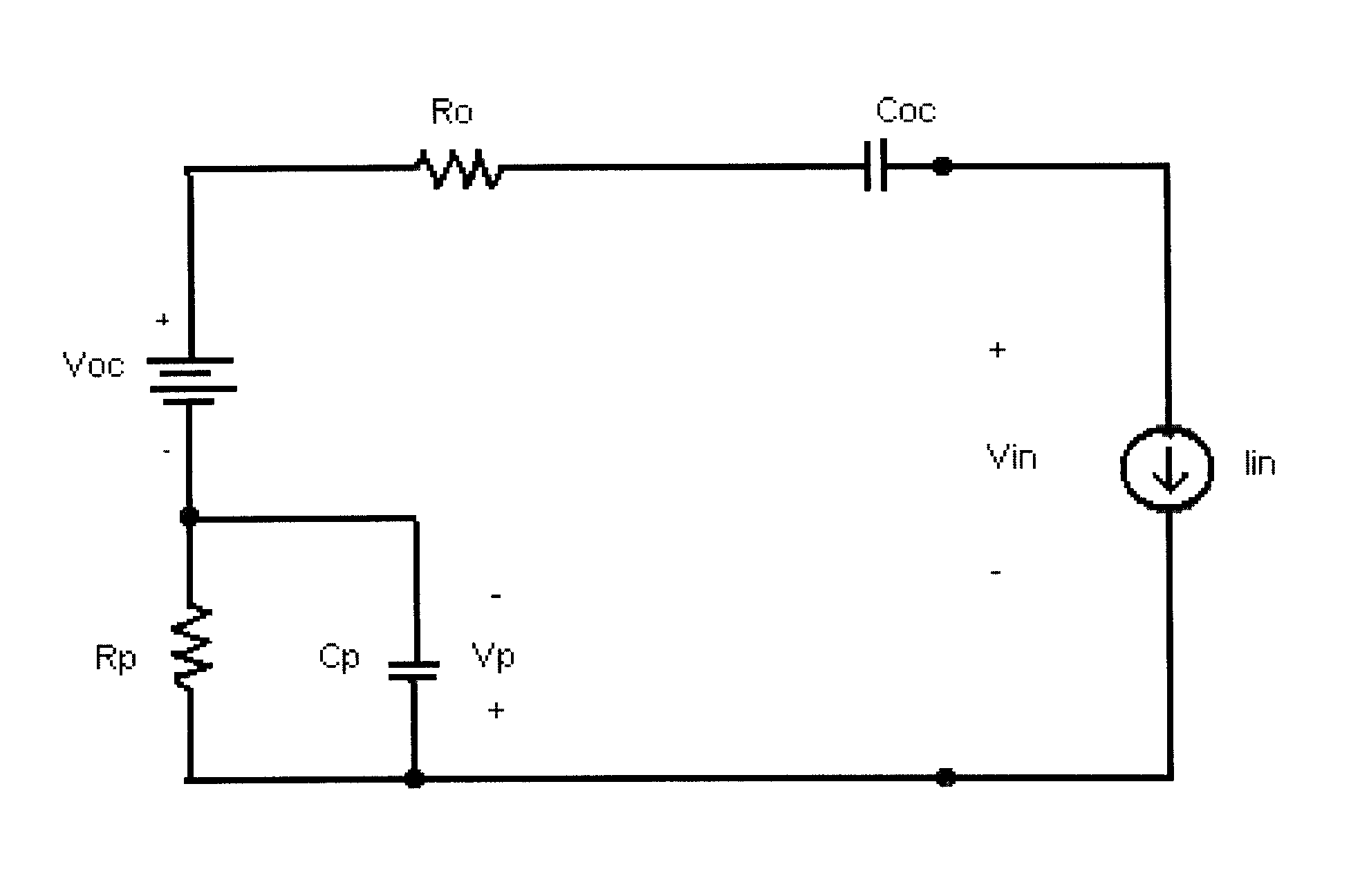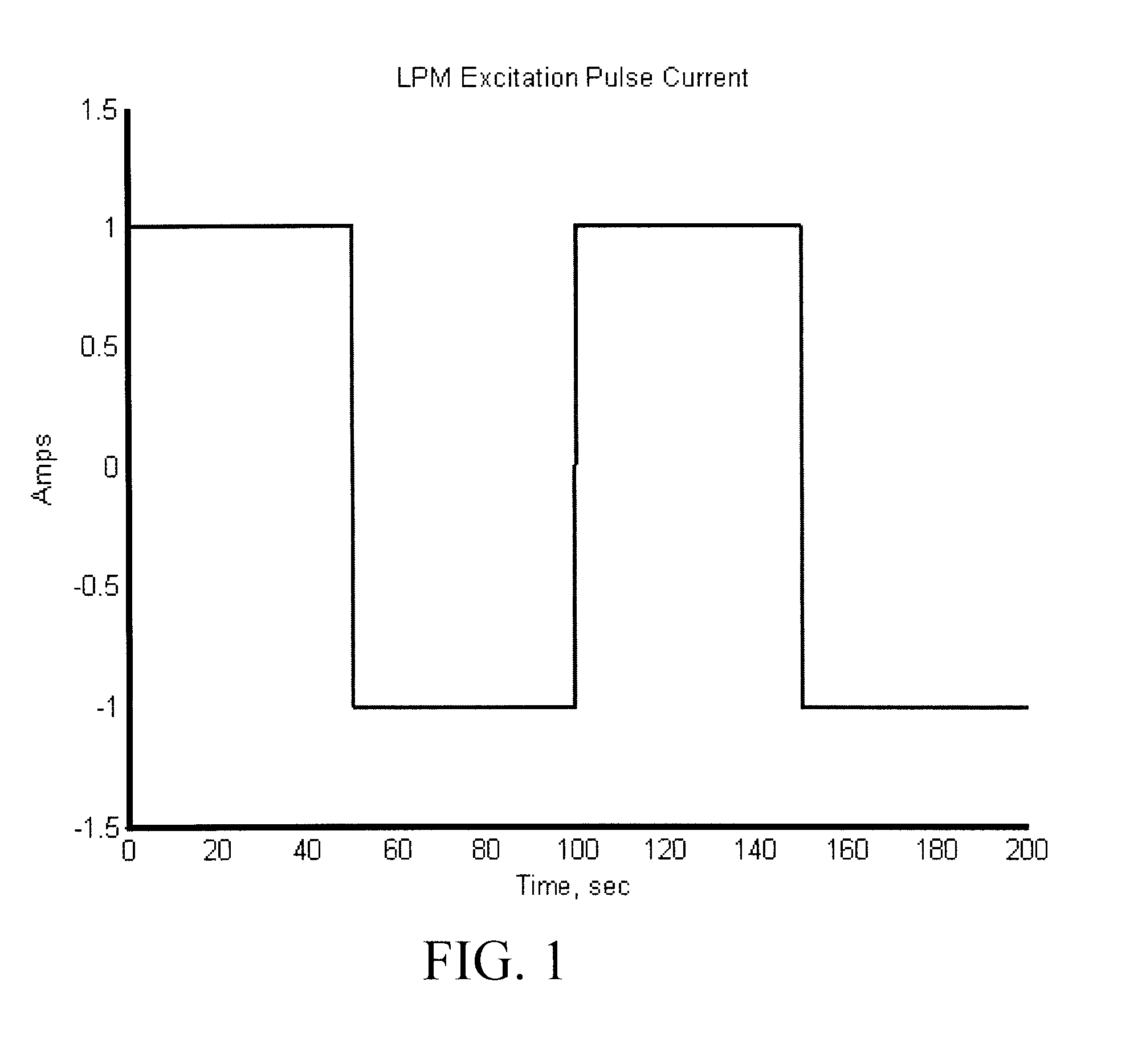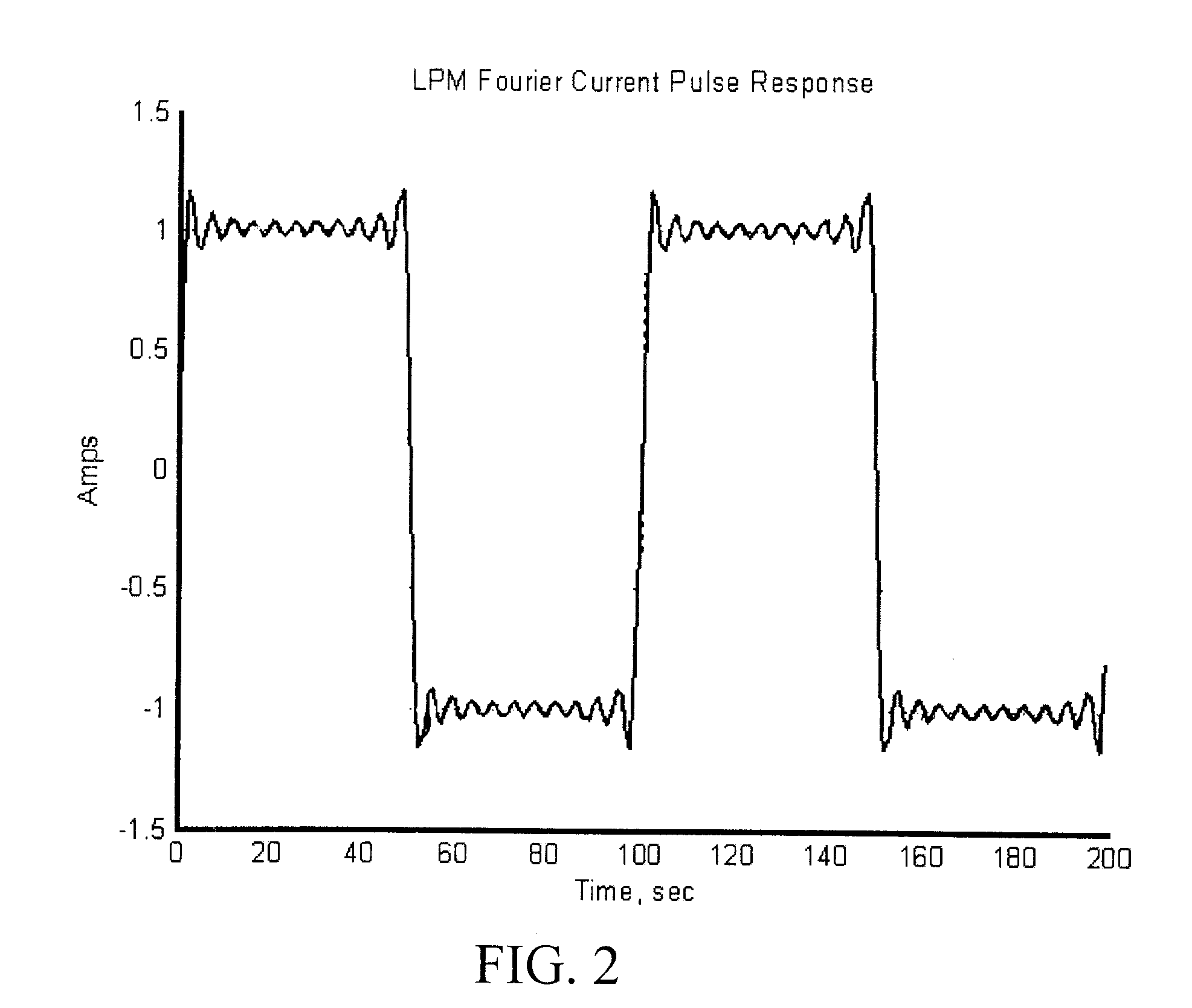Method of Estimating Pulse Response Using an Impedance Spectrum
a pulse response and impedance spectrum technology, applied in the direction of instruments, electrochemical generators, spectral/fourier analysis, etc., can solve the problem of lower resolution of impedance spectra than desired, and achieve the effect of fast summation transformation and lower resolution
- Summary
- Abstract
- Description
- Claims
- Application Information
AI Technical Summary
Benefits of technology
Problems solved by technology
Method used
Image
Examples
Embodiment Construction
[0022]The method of the subject invention uses wideband impedance measurements to predict the response of an energy storage device (ESD) to a pulse excitation. The impedance spectrum can be acquired by various methods, but rapid, in-situ techniques such as Fast Summation Transformation (FST) are preferred. FST is based on a computationally simple approach, and it only requires one period of the lowest frequency to complete a measurement (Morrison, 2009).
[0023]In a preferred embodiment, the anticipated or desired excitation pulse consists of a constant current square-wave profile. If it assumed that this profile is periodic (for analysis purposes only), the waveform can be decomposed into the constituent harmonic components using Fourier series methods. An example of an excitation pulse is shown in FIG. 1 and described by Equation 1, where a constant current pulse (i.e., IP) is applied for a discharge (i.e., +IP) and charge (i.e., −IP) step over two periods with T0 set to one half th...
PUM
 Login to View More
Login to View More Abstract
Description
Claims
Application Information
 Login to View More
Login to View More - R&D
- Intellectual Property
- Life Sciences
- Materials
- Tech Scout
- Unparalleled Data Quality
- Higher Quality Content
- 60% Fewer Hallucinations
Browse by: Latest US Patents, China's latest patents, Technical Efficacy Thesaurus, Application Domain, Technology Topic, Popular Technical Reports.
© 2025 PatSnap. All rights reserved.Legal|Privacy policy|Modern Slavery Act Transparency Statement|Sitemap|About US| Contact US: help@patsnap.com



